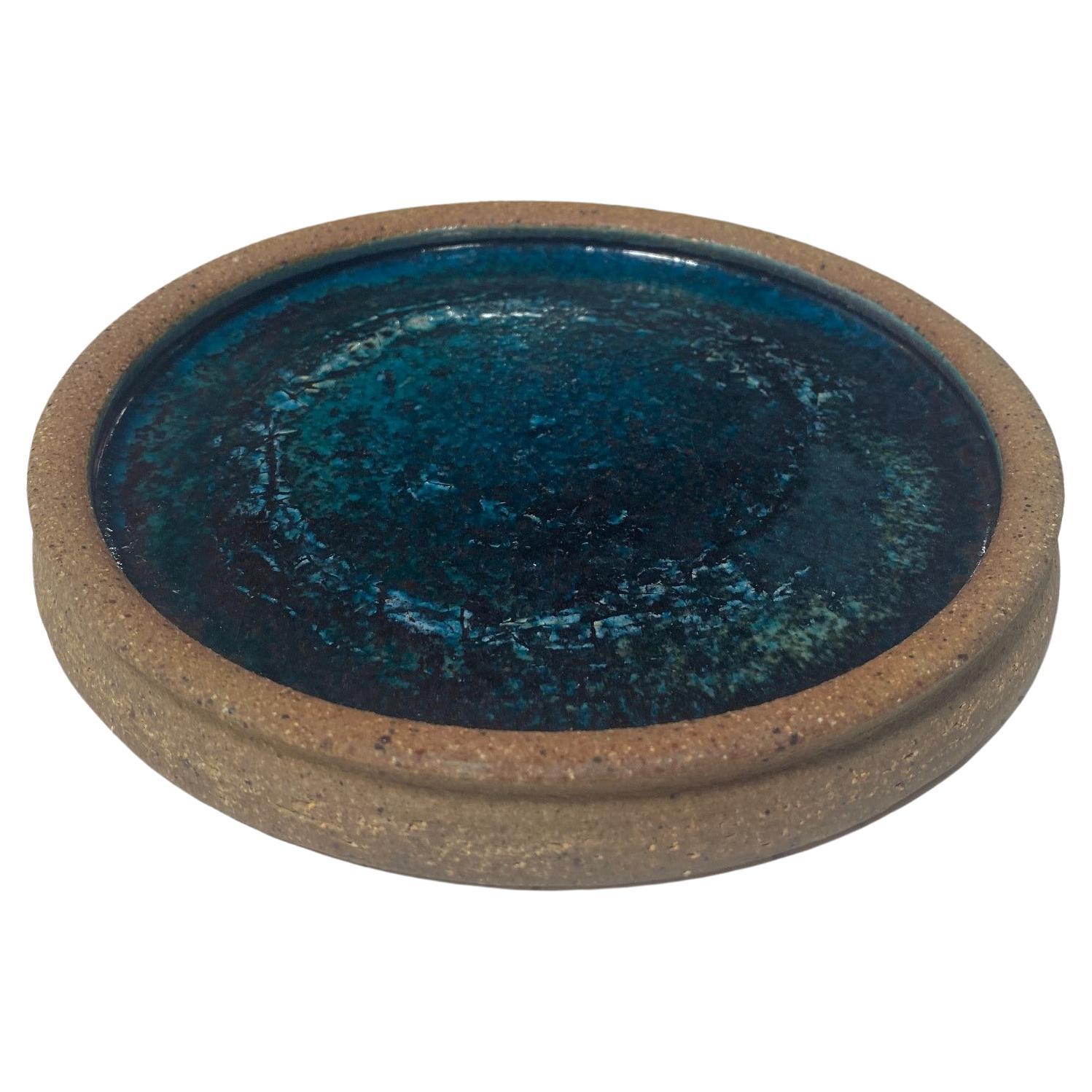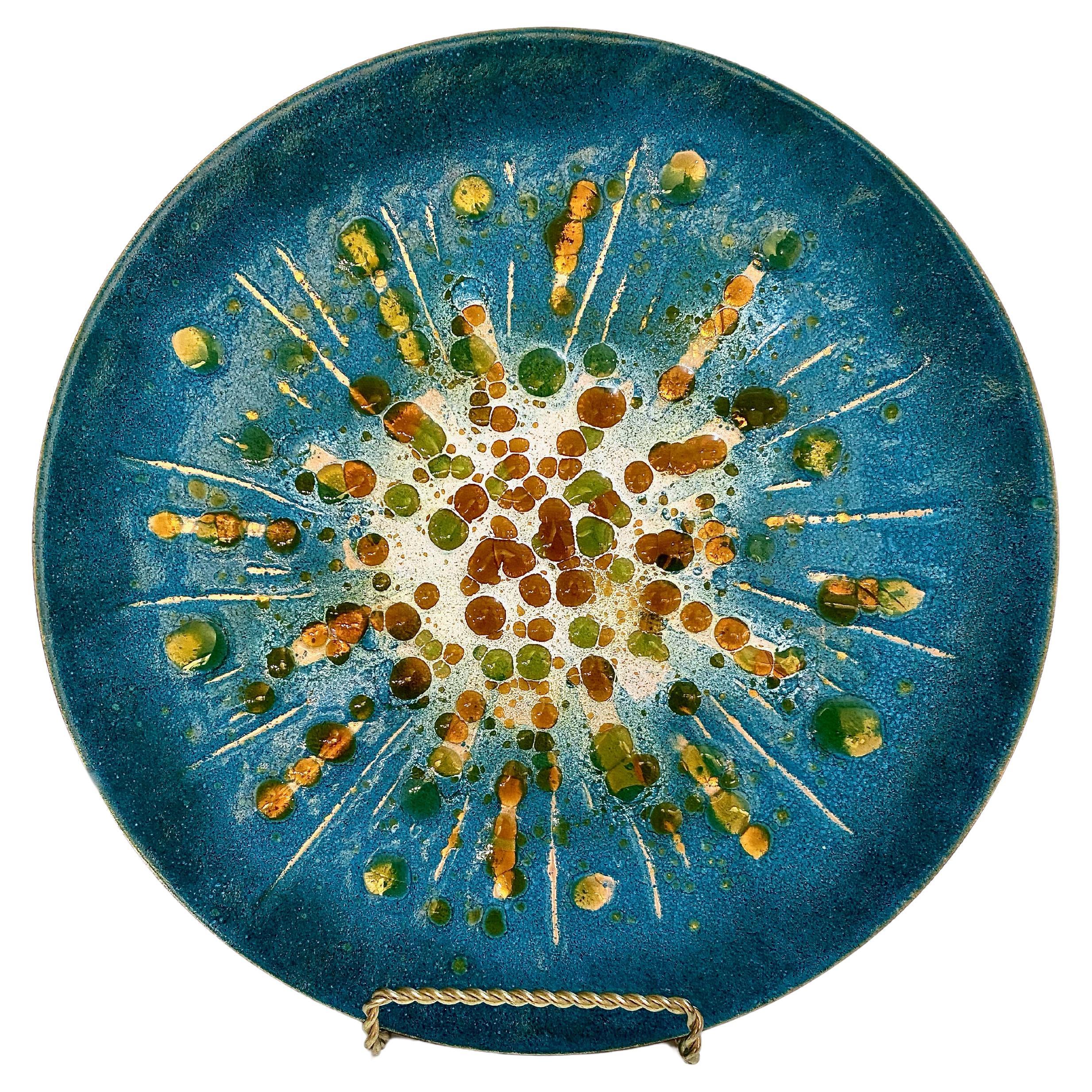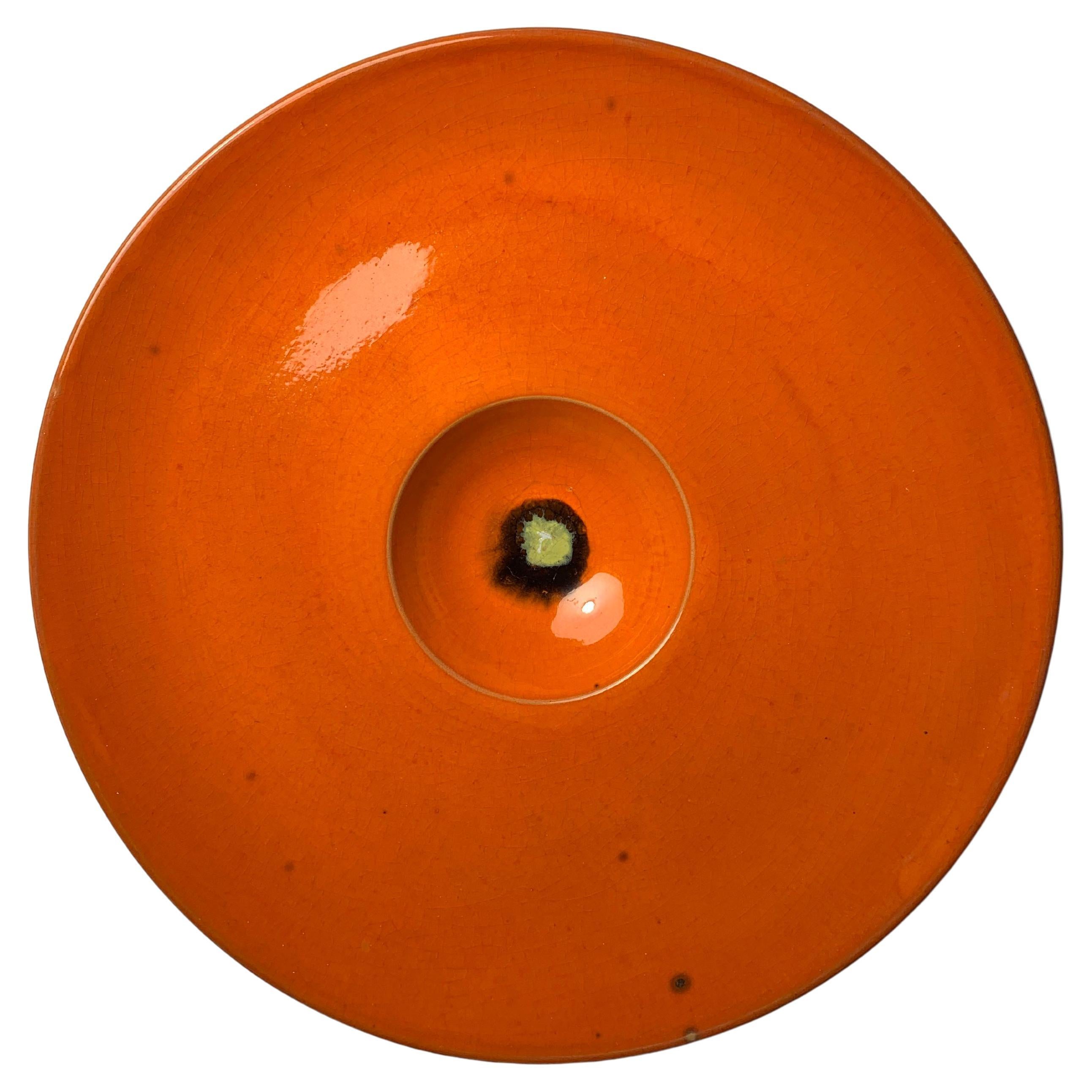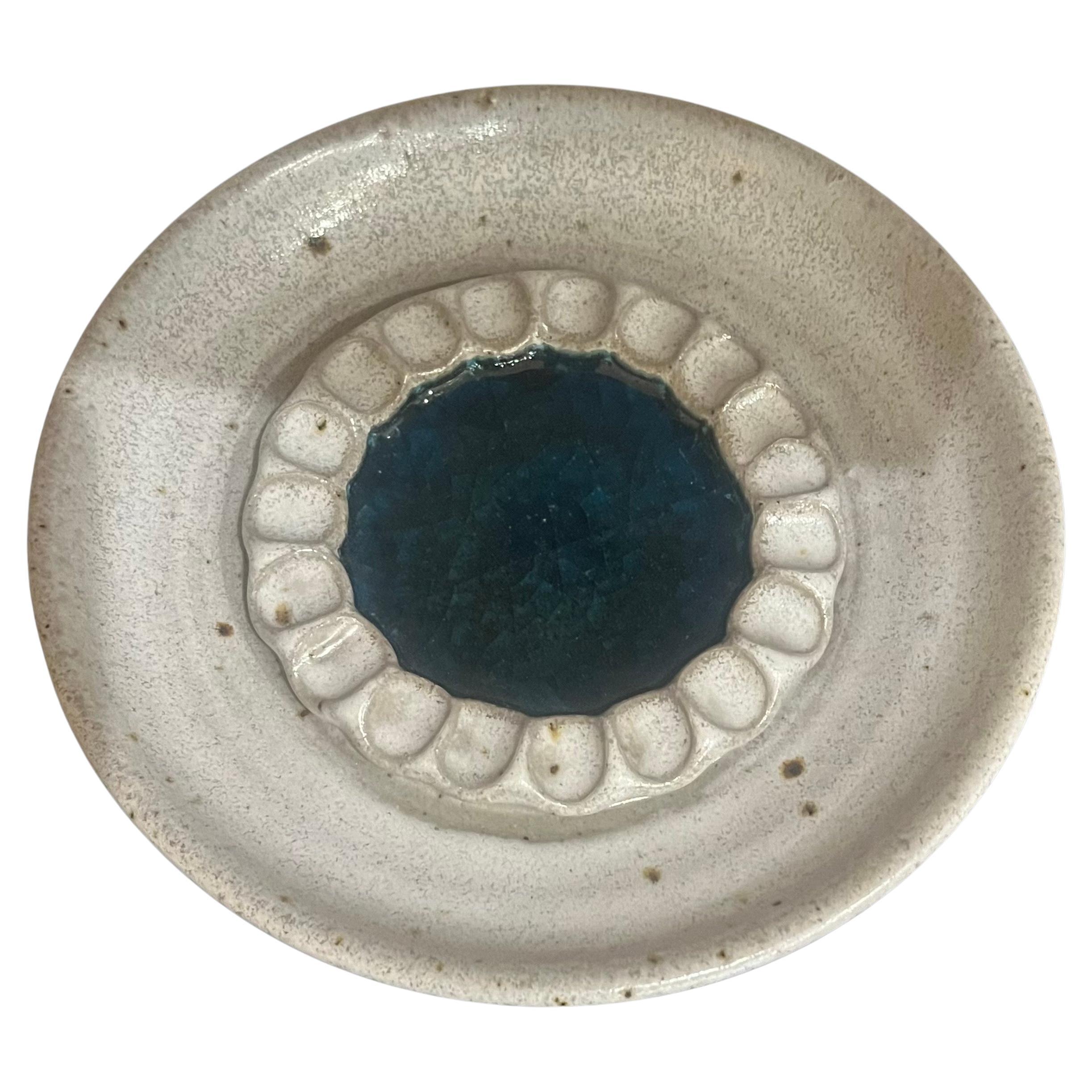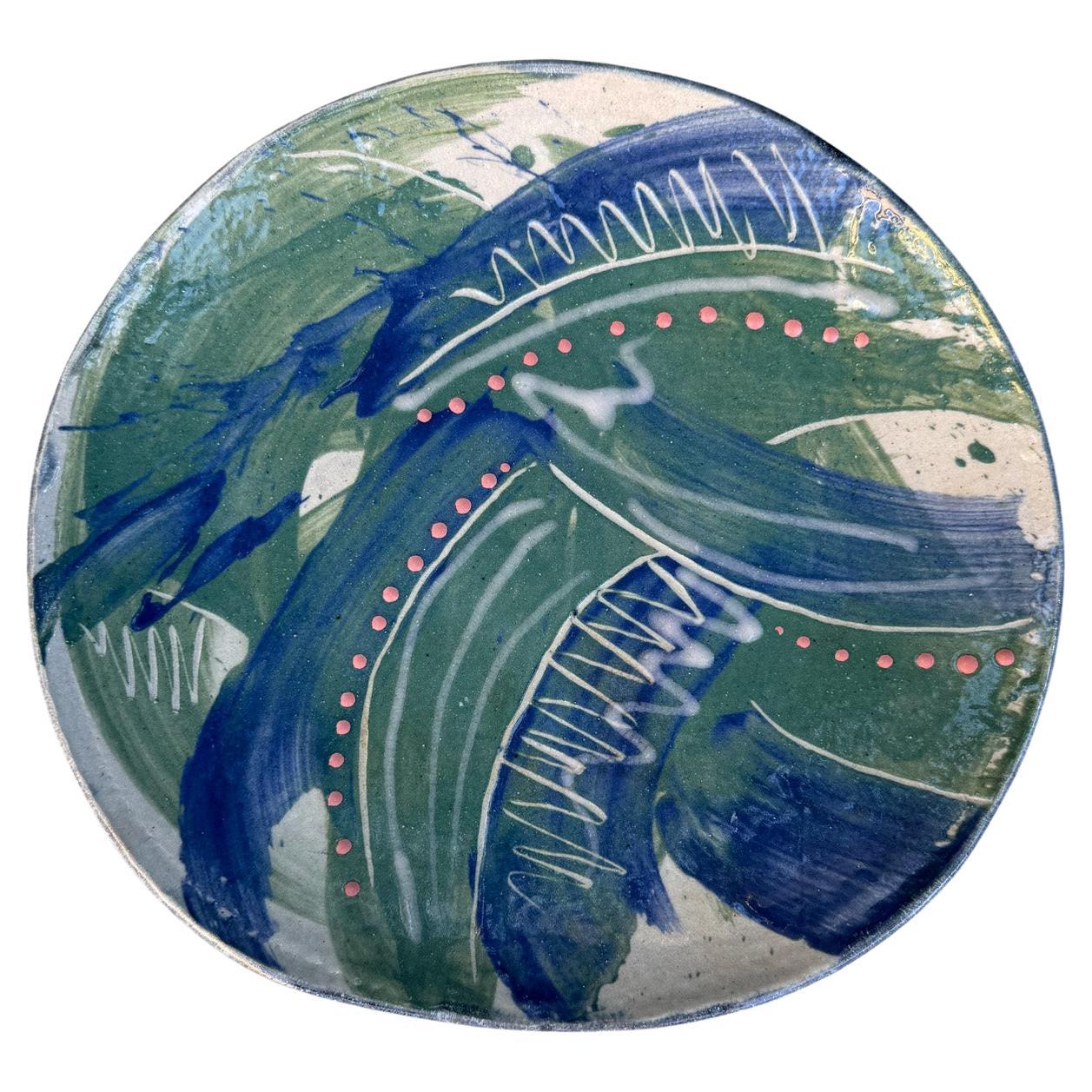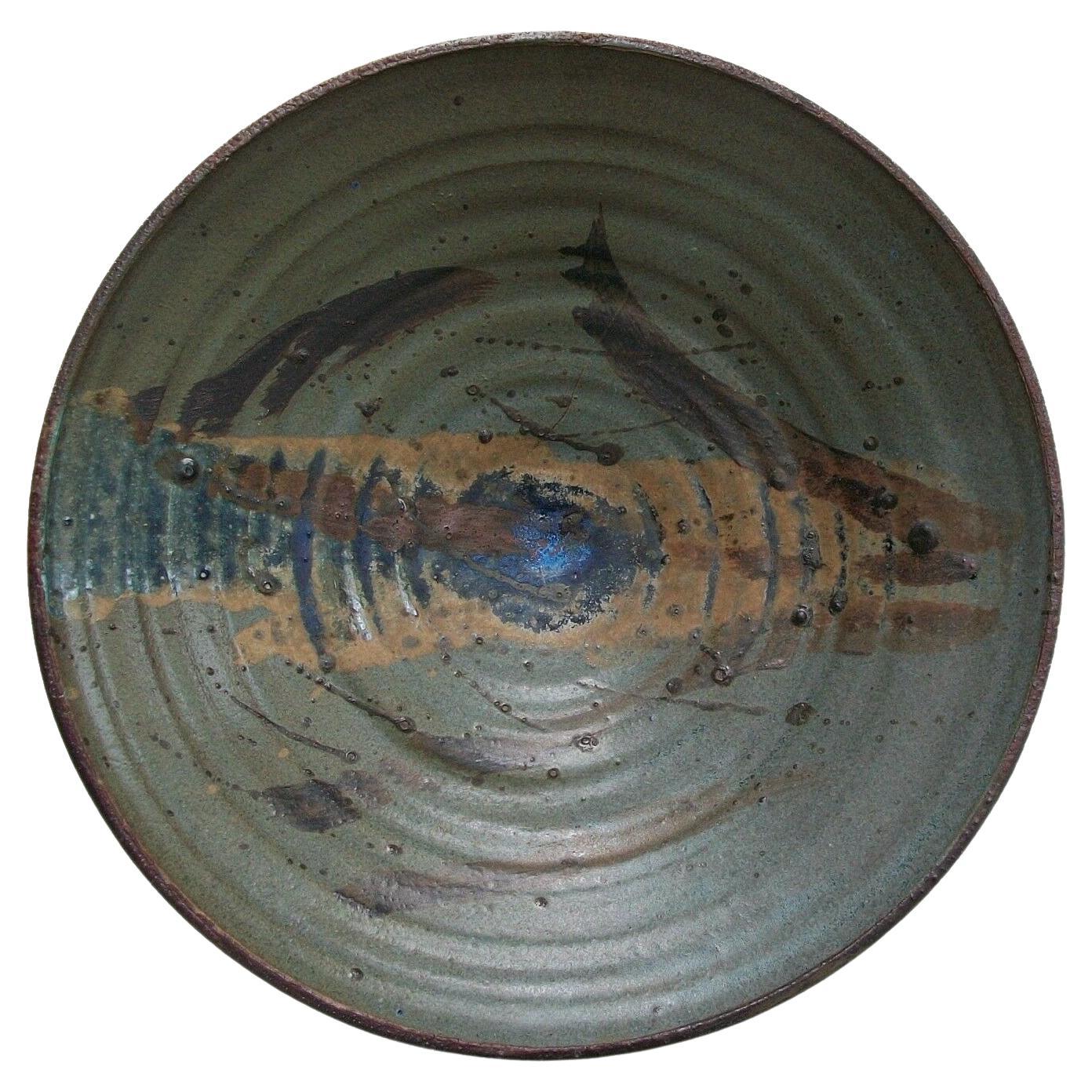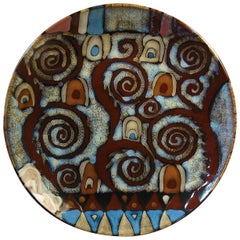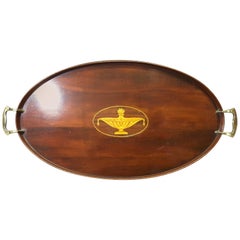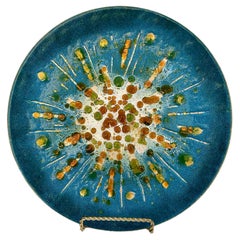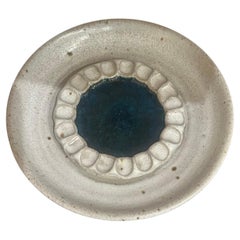Items Similar to N.H. Governor John W. King Political Campaign Charger by Gerry Williams
Want more images or videos?
Request additional images or videos from the seller
1 of 11
N.H. Governor John W. King Political Campaign Charger by Gerry Williams
$1,295
£978.86
€1,124.88
CA$1,803.28
A$2,006.07
CHF 1,051.61
MX$24,513.74
NOK 13,390.93
SEK 12,605.71
DKK 8,396.83
Shipping
Retrieving quote...The 1stDibs Promise:
Authenticity Guarantee,
Money-Back Guarantee,
24-Hour Cancellation
About the Item
A rare and unusual Studio Pottery charger by Gerry Williams, (1926-2014.) Stoneware with grey, blue and black earth tone glaze, for "New Hampshire Governor John W. King" in bold letters around the rim, produced for political Campaign of three term governor of New Hampshire from 1963-1969, John W. King.
Incised signature on base, 10 1/4" inches in diameter x 1 3/4" inches deep.
- Creator:Gerry Williams (Workshop/Studio)
- Dimensions:Height: 1.75 in (4.45 cm)Diameter: 10.25 in (26.04 cm)
- Style:Mid-Century Modern (Of the Period)
- Materials and Techniques:
- Place of Origin:
- Period:
- Date of Manufacture:circa 1963
- Condition:Wear consistent with age and use.
- Seller Location:Ottawa, CA
- Reference Number:1stDibs: LU141725040093
About the Seller
5.0
Gold Seller
Premium sellers maintaining a 4.3+ rating and 24-hour response times
Established in 1989
1stDibs seller since 2015
458 sales on 1stDibs
Typical response time: 3 hours
- ShippingRetrieving quote...Shipping from: Ottawa, Canada
- Return Policy
Authenticity Guarantee
In the unlikely event there’s an issue with an item’s authenticity, contact us within 1 year for a full refund. DetailsMoney-Back Guarantee
If your item is not as described, is damaged in transit, or does not arrive, contact us within 7 days for a full refund. Details24-Hour Cancellation
You have a 24-hour grace period in which to reconsider your purchase, with no questions asked.Vetted Professional Sellers
Our world-class sellers must adhere to strict standards for service and quality, maintaining the integrity of our listings.Price-Match Guarantee
If you find that a seller listed the same item for a lower price elsewhere, we’ll match it.Trusted Global Delivery
Our best-in-class carrier network provides specialized shipping options worldwide, including custom delivery.More From This Seller
View AllLarge Abstract Studio Art Pottery Charger
Located in Ottawa, Ontario
A large Abstract Studio Art Pottery charger, unmarked, attributed to Poole Pottery U.K. Decorated in attractive an abstract spiral pattern i...
Category
Mid-20th Century Mid-Century Modern Pottery
Materials
Pottery
Edwardian Mahogany Serving Tray by Manning Bowman & Co.
By Manning Bowman
Located in Ottawa, Ontario
Edwardian mahogany serving tray by Manning Bowman & Co. Made in Middletown, Connecticut. An Oval tray with solid brass handles, with a Gr...
Category
Early 20th Century American Edwardian Platters and Serveware
Materials
Mahogany
WMF Silverplate Modernist Plate Sigrid Kupetz Design with Small Oval Bowl
By WMF Württembergische Metallwarenfabrik
Located in Ottawa, Ontario
WMF silver plate modernist plate Sigrid Kupetz design with small oval bowl, both by Wurttembergische Metallwarenfabrik, mid-20th century. The plate is ...
Category
Vintage 1930s German Aesthetic Movement Sheffield and Silverplate
Materials
Silver Plate
Mappin & Webb Wine Bottle Coaster or Slide Triple Princess Plate
By Mappin & Webb
Located in Ottawa, Ontario
Mappin & Webb wine bottle coaster or slide triple princess plate, London, made in England, walnut turned wood base with felt bottom. The coaster/wine S...
Category
Early 20th Century English Edwardian Sheffield and Silverplate
Materials
Silver Plate
Large Antique Copper Mixing Bowl By Elkington & Co Circa 1920
By Elkington & Co.
Located in Ottawa, Ontario
A LARGE ANTIQUE COPPER MIXING BOWL
BY ELKINGTON & CO
Circa 1920
Extra large and heavy professional
mixing bowl with triangular loop handle...
Category
Early 20th Century English International Style Tableware
Materials
Copper
Chinese Export Canton Blue and White Plate, circa 1820
Located in Ottawa, Ontario
A Chinese export canton blue and white plate
circa 1820
Typically painted with a riverscape
showing arched bridge, willows and pagodas...
...
Category
Antique Early 19th Century Chinese Chinese Export Ceramics
Materials
Ceramic
You May Also Like
William Wyman Signed Massachusetts Midcentury Herring Run Studio Pottery Bowl
By William Wyman
Located in Studio City, CA
A wonderful work by East Coast/ Massachusetts master potter William Wymann. This piece features a fantastic texture and rich, sumptuous, deep ocean-like blue crackle glaze that chang...
Category
Vintage 1960s American Mid-Century Modern Ceramics
Materials
Stoneware
Large Mid-Century Enamel-on-Copper Charger
Located in Pasadena, CA
This is an impressive 18" diameter Enamel-on-Copper charger that was designed and created by the well-known Mesick Studios. The stunning intense turquoi...
Category
Vintage 1960s American Mid-Century Modern Platters and Serveware
Materials
Copper, Enamel
$683 Sale Price
34% Off
Large Vintage Artist Charger by Bjorn Wiinblaad for Rosenthal / Wall Sculpture
By Bjorn Wiinblad, Rosenthal
Located in Chicago, IL
A large artist studio ceramic charger by Bjorn Wiinblad. Nice as a Table ornament or possibly mounted as a wall art.
some minor loss/crackling to glaze in the center (as shown).
Category
Mid-20th Century Danish Mid-Century Modern Decorative Bowls
Materials
Ceramic
Victoria Littlejohn Hand Thrown Mid Century Pottery Ashtray catch it all
By Victoria Littlejohn
Located in San Diego, CA
Beautiful design and color by Victoria Littlejohn, hand thrown Dish with a wonderful neutral light grey color glaze with a central blue green crystalline thick glaze surrounded by a ...
Category
20th Century American Mid-Century Modern Decorative Bowls
Materials
Pottery
Frank Matranga Signed Ceramic Charger, California, 20th Century
By Frank Matranga
Located in San Juan Capistrano, CA
Frank Matranga Signed Ceramic Charger, California, 20th Century. Buyer can easily add a wire to the back to mount onto the wall.
Category
20th Century American Post-Modern Decorative Dishes and Vide-Poche
Materials
Ceramic
HANS SENGERS - Splash Decorated Studio Pottery Charger - Canada - 20th Century
Located in Chatham, ON
HANS SENGERS (Johanna Leentje van der Ham Sengers 1923-2015) - Exceptional wheel thrown studio pottery charger with splash/hand painted decorat...
Category
Mid-20th Century Canadian Mid-Century Modern Decorative Bowls
Materials
Ceramic
More Ways To Browse
Pottery Charger
Studio Pottery Chargers
Stoneware Charger
Hampshire Pottery
Gerry Williams Pottery
Lacquerware Bowls
Lalique Bird Bowl
Louis Vuitton Kitchen
Opal Glass Ashtray
Primitive Dough Bowl
Reed And Barton Enamel
Trencher Bowl
Vintage Mexican Pottery Bowls
White Marble Tazza
Alexandrite Glass Bowl
Antique India Brass Bowls
Copper Jam
Crystal Bowl Poland
